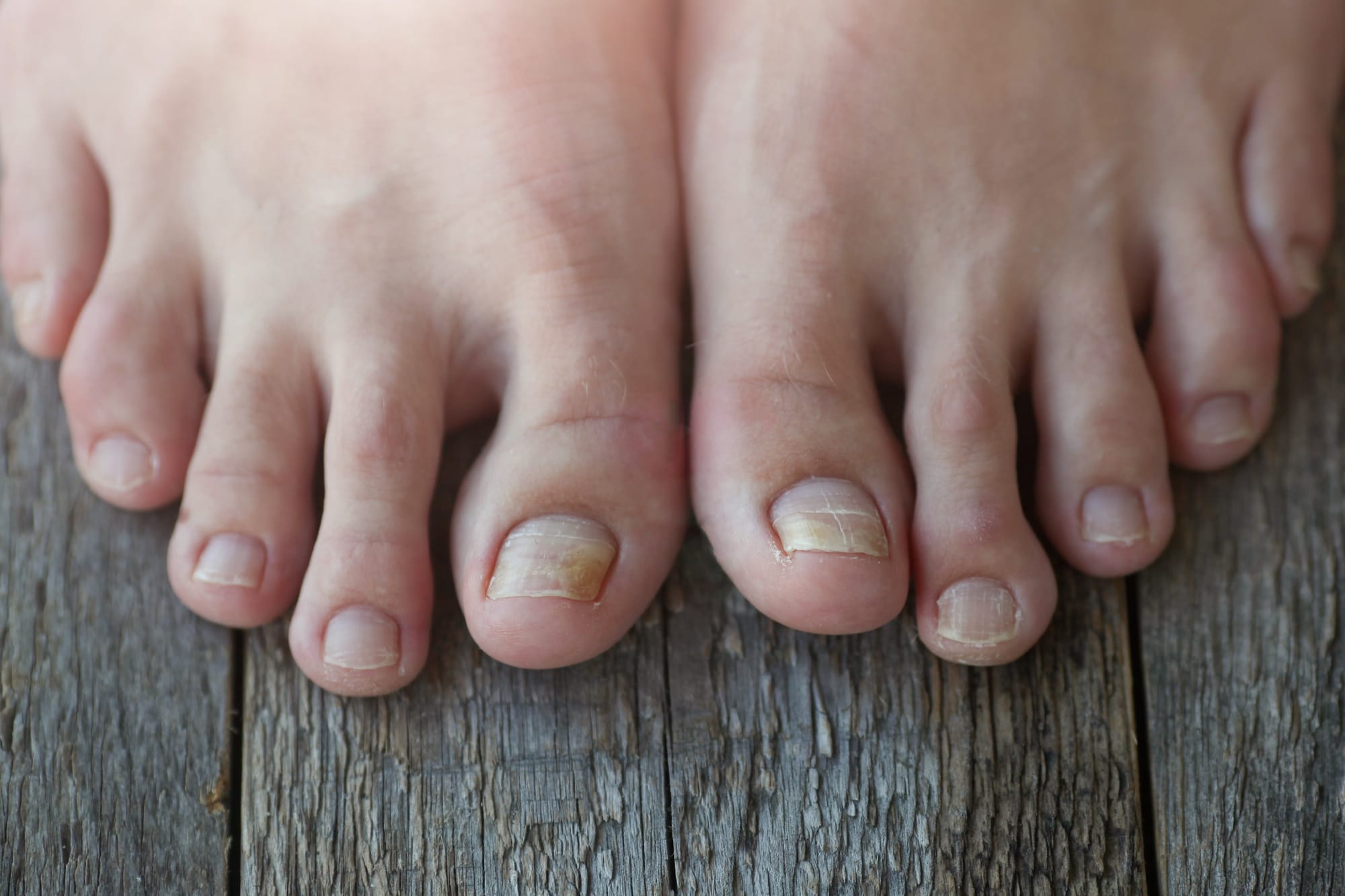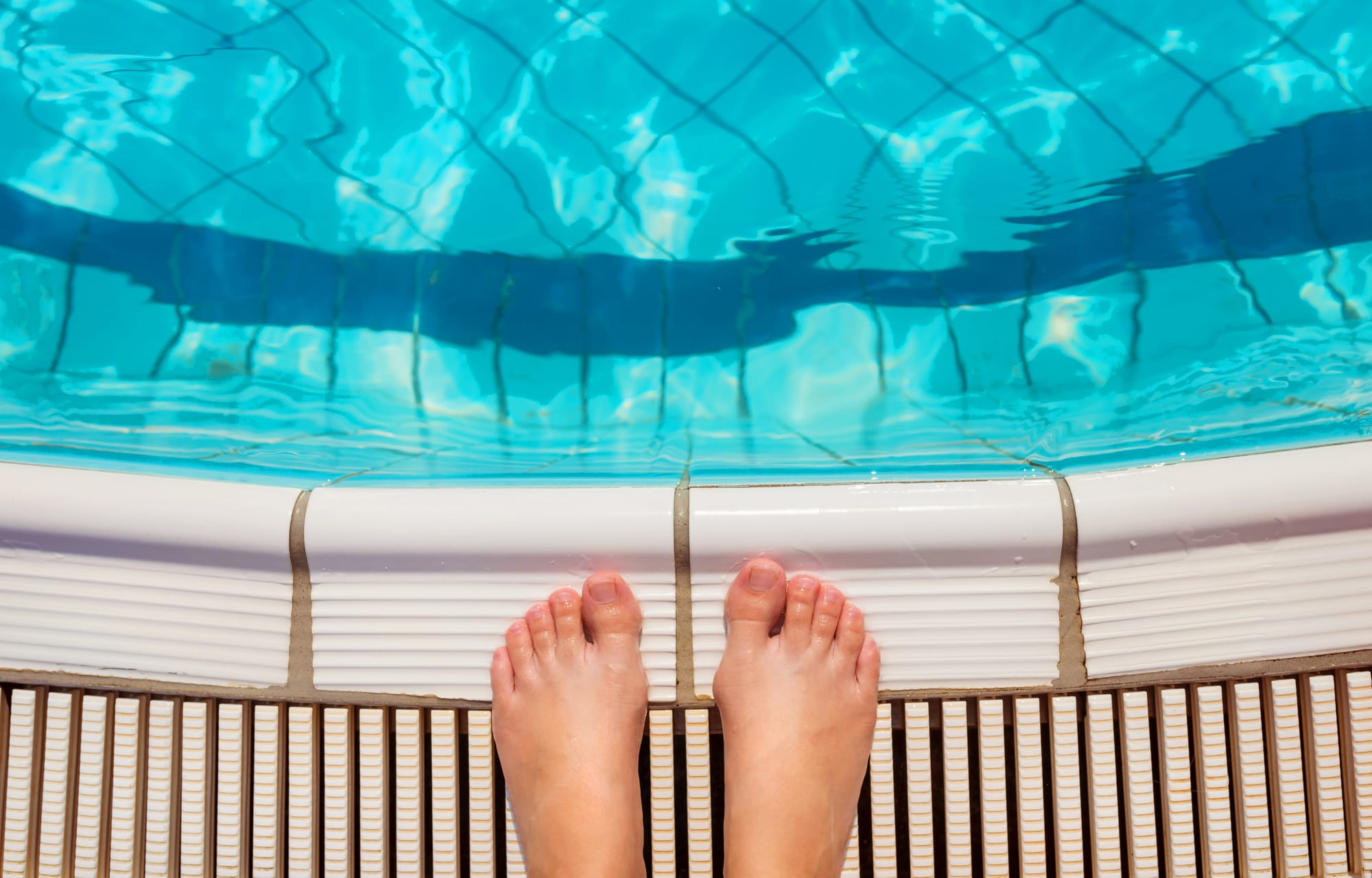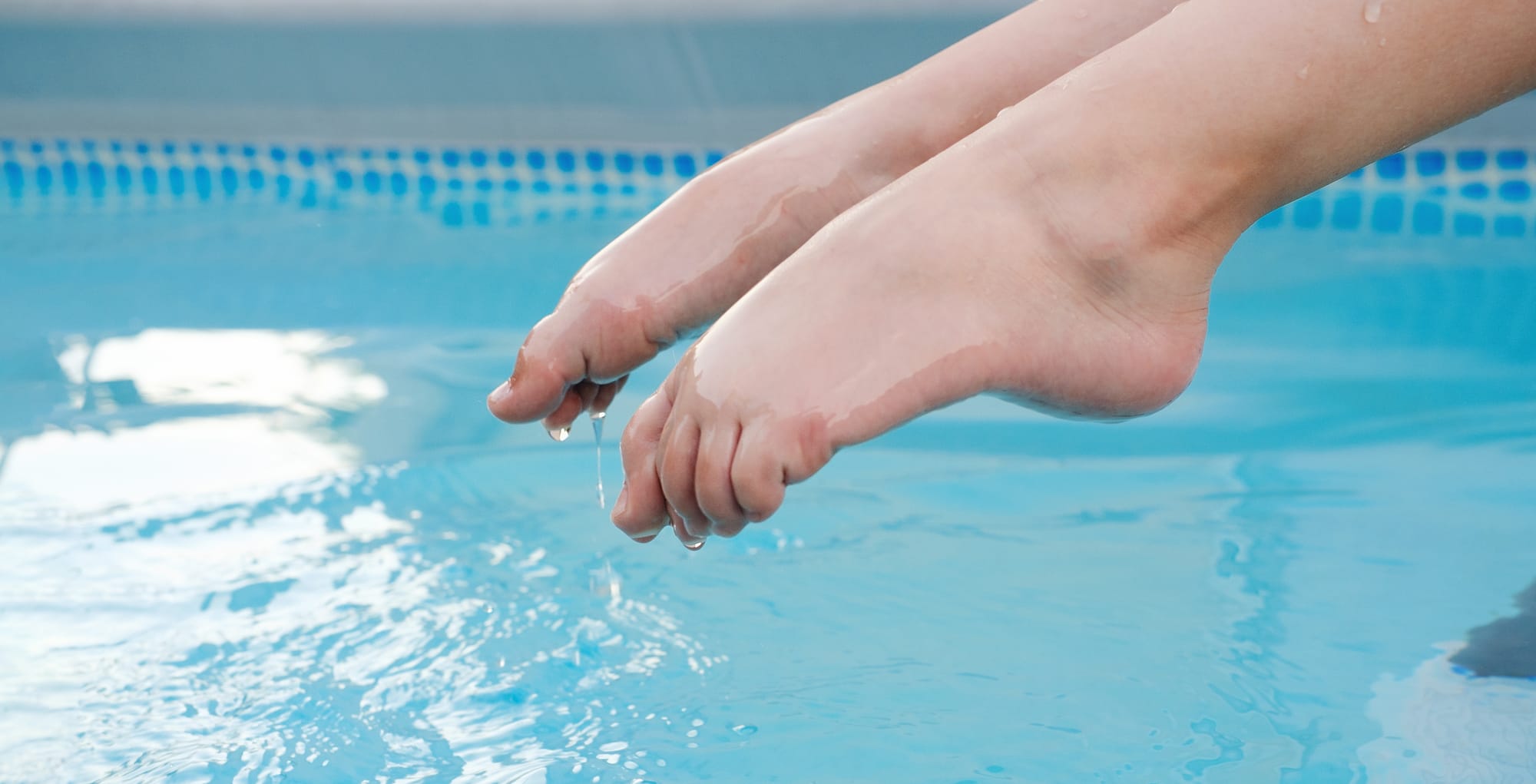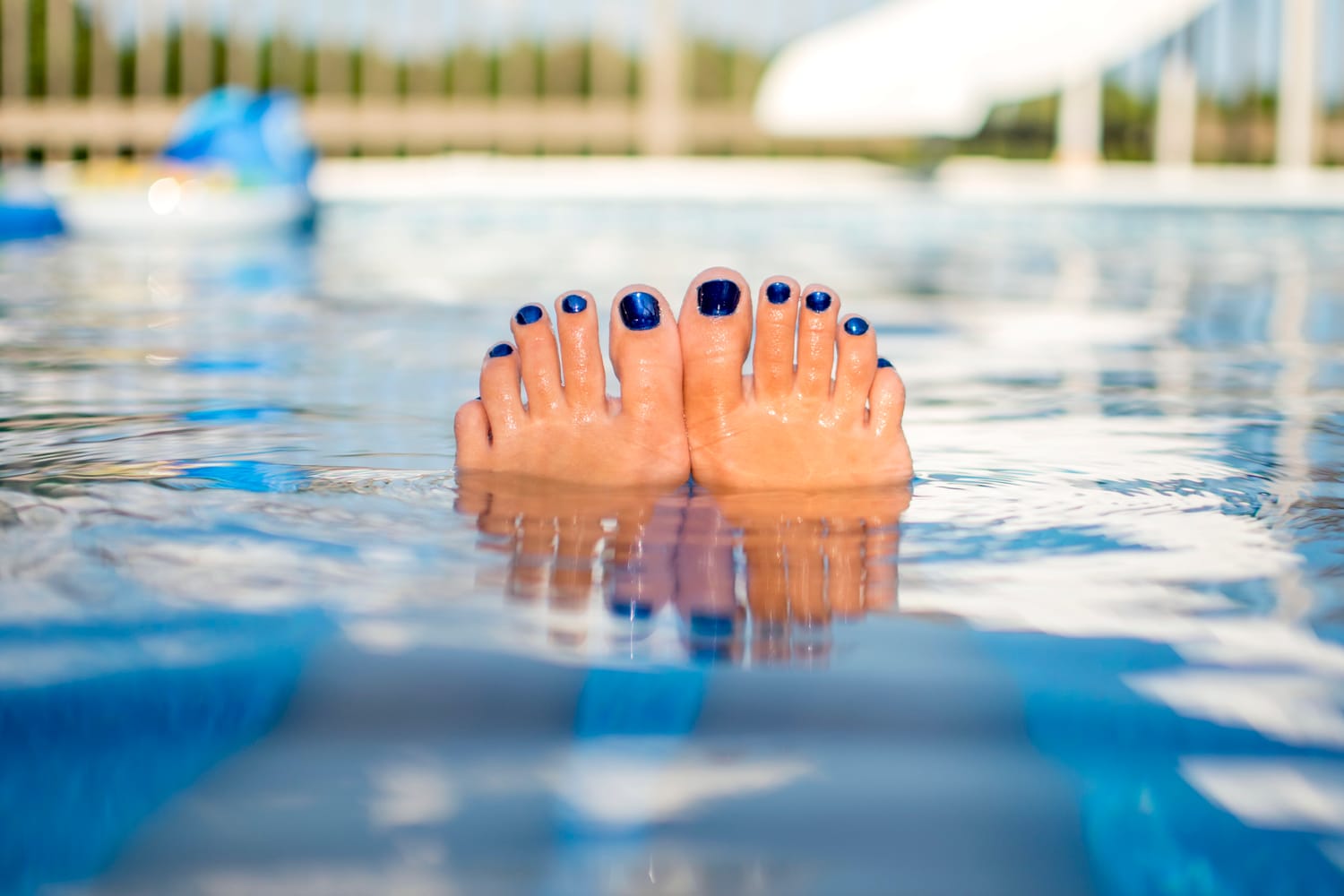Heading to the pool to get in a swim is a wonderful way to relax, but did you know that it's a sneaky place to get a foot fungus infection? That's right—public pools actually spread fungal infections such as athlete’s foot, something that's definitely not fun in any way at all! In this article, we’re going to get to the bottom of foot fungus, how it’s transmitted, and why pools may be a perpetrator. Plus, we’re going to share tips on how to keep you safe using easy fungal treatment options so you won’t be suffering itching, burning, or peeling skin that's a side effect of these infections. So, if you want to be a happy foot owner without a fungus infection this summer, continue to read!
What is Foot Fungus and How Does it Develop?

Foot fungus, also referred to as athlete’s foot, is a fungal infection that's fairly prevalent and often begins between toes. It tends to erupt when feet get clammy and packed in tight shoes for a time that's too lengthy. The primary signs of foot fungus to watch for are itching, scaly skin, and sometimes redness or even a rash of blisters that appears. This infection is contagious, so it's easily transmitted such as sharing towels, flooring, or shoes.
The same fungi that produce other infections such as ringworm or jock itch produce it, and it grows in warm, damp places. Athlete’s foot tends to hang around even after using antifungals, so it’s a great idea to treat it when you first start to feel symptoms.
Some common signs of foot fungus infection are peeling between toes, itching when shoes are removed, and red or discolored skin. In the event that over-the-counter medications fail after a week or two or if you happen to be diabetic, you should get a checkup.
Activities such as wearing shoes that trap in moisture, going bare feet in areas such as in a locker room, and sharing shoes or a towel with someone you know is infected expose you to it. In order to avoid it, be certain to get feet dry and refreshed—change socks, put on shoes that provide air circulation, and apply powders that have antifungals to assist. And of course, never share shoes or a towel to assist in avoiding it.
How Does Swimming Pools Contribute to Foot Fungus Infection?

As you soak in or around a swimming pool during this summer, it's easy to disregard possible foot hazards, especially when it's foot fungus that's in danger. Pools cool you down, yet pools also provide a great breeding ground for fungi that lead to such infections such as athlete's foot, toenail fungus, and ringworm. So just how do pools lead to foot fungus infection?
Well, pools happen to be warm, damp places, just what fungi adore. If you walk around pools in bare feet, you’re more likely to contract these infections. Athlete's foot, for example, prospers in such an environment, and it itches, reddens, or cracks up feet. The silver lining is that fungal treatment in the way of antifungals in spray or cream can often eliminate it if you catch it in time. However, it’s better to be cautious: always use waterproof flip-flops when you’re in areas around pools, dry up after a splash, and never share shoes or towels.
Fungus in toenails is a condition that’s also common. If toenails become discolored, thickened, or brittle, it’s a fungal infection, possibly. The fungus is a tough one to get over, but it’s treatable using antifungals in cream, ointment, or pill form. By keeping toenails clean and dry and wearing shoes in public places around pools, you can halve your chances of getting toenail fungus.
Even when feet feel great, you can end up having to put up with something called pool toe. This is when toenails get battered around kicking repeatedly off of the side of the pool, loosening or even coming off completely. If you don’t want to put up with it, wearing a snug-fitting pair of swim shoes or fins is a must.
So if you’re going to hit up the pool this summer, take a few easy precautions to fungus-proof feet: shower beforehand and after, stay away from going bare in areas around pools, and slip on the right shoes. With a little TLC, you can splash around in the water without a fungal infection ruining your day!
What Are the Signs of Foot Fungus Picked Up at Pools

If you're worried about foot fungus in a pool, you're probably talking about athlete's foot (tinea pedis). It's a fungal infection that starts between toes and is very common in those that over-sweat in tight footwear. So if you walk around bare feet in places like a public pool or locker room, you can easily get it from the floor or used up towels.
The symptoms? Most often, you get a great itching of feet and a scaly or scabby looking rash. The skin peels or cracks, and reddens or even turns a deep shade of purple, depending on your color of skin. It stings or burns, and sometimes you get blisters. One of those annoying ailments that's easily spread, you'll want to treat it with an antifungal treatment.
So that it won't be contagious or return, it's absolutely key to get feet clean and dry. Often change socks (and if you over-sweat, even more often), use a sandal in a public shower, and air shoes out. Also, if you've been self-treating it and it's not getting better after two weeks, it's time to get a check-up in with a doc. And if you've got diabetes, be sure to check in with a doc if you think you've got athlete's foot.
Foot fungus is relatively contagious, so just be careful about such things as going without shoes in areas a great many feet walk around in or using someone else's towels. If it advances or spreads, you may end up getting a fungal infection in another spot on your body, such as jock itch. The most important key to preventing all of that? Dry feet, dry socks, and be careful in public areas!
Conclusion
All in all, foot fungus, or more broadly, athlete’s foot, is a common fungal infection that proliferates in warm, humid areas such as pools. The infection is easily transmitted in public areas, and itching, burning, scaly skin can be irritating and chronic if it’s not addressed. By getting a jump start, such as wearing waterproof shoes, keeping feet absolutely bone-dry, and not sharing personal belongings, you can easily reduce your chances of getting foot fungus. If you believe you’ve got a fungal infection, it’s absolutely imperative to treat it immediately using antifungal medications in order to prevent it getting worse or spreading to other parts of the body. By being careful, you can enjoy the rewards of swimming without foot fungus or other fungal infections getting in the way.

